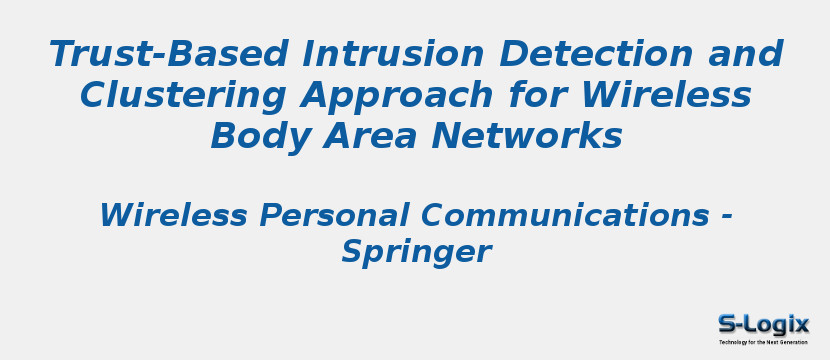Research Area: Wireless Sensor Networks
For most of the tele-health applications body area networks (BANs) have become a favouring and significant technology. This application domain is exclusive so assuring security and obtaining the trustworthy details of the patients’ physiological signs is difficult. To rectify this issue, an attack-resilient malicious node detection scheme (BAN-Trust) is brought-in in the current system, which can identify the malignant attacks on BANs. In this BAN-Trust scheme, malignant nodes is identified according to the nature acquired through the nodes by their own and approvals shared by various nodes. Nevertheless, BAN-Trust conceives the common behaviour among the nodes and it doesn’t conceive the energy of the nodes and gather the information for measuring the trust. So, here, trust-based intrusion detection and clustering is proposed in order to identify the malignant nodes and broadcast the energy-effective data. In our work, trust-based intrusion detection model is brought-in for identifying the malignant nodes. Different varieties of trusts were conceives, namely energy, data and communication trust, which can be developed among two sensor nodes. Once after identifying the malignant nodes, the rest of the nodes in the network were gathered in order to create the cluster. Every cluster has one cluster head (CH) that is chosen by utilizing the multi objective firefly algorithm. The target function of this system is to reduce the delay, increase the broadcast energy and throughput. The multiple body sensor nodes were in-charge for gathering different varieties of data that were sent to the CH. The CH then forwards the gathered data to the sink and sends the details to the system via gateway. By utilizing a hybrid encryption algorithm, the system’s data is encrypted and forwarded to the hospital server. Decrypting is done on the server side to disclose the exact data. The proposed methodology is executed by utilizing an NS-2 simulator. The experimental output provides that the proposed system accomplishes good performance when distinguished with the current system in terms of precision, recall, throughput, packet delivery ratio and end to end delay.
Keywords:
Author(s) Name: Dinesh Kumar Anguraj and S. Smys
Journal name: Wireless Personal Communications
Conferrence name:
Publisher name: Springer
DOI: 10.1007/s11277-018-6005-x
Volume Information: volume 104, pages 1–20 (2019)
